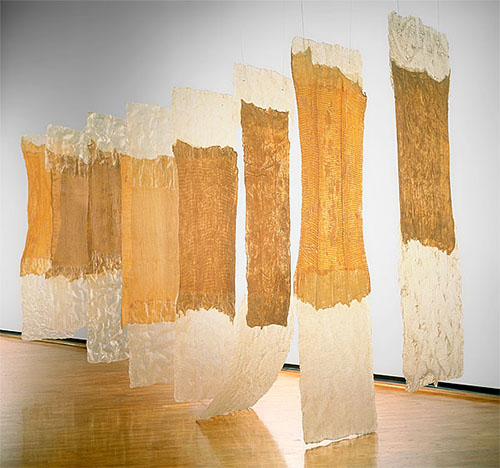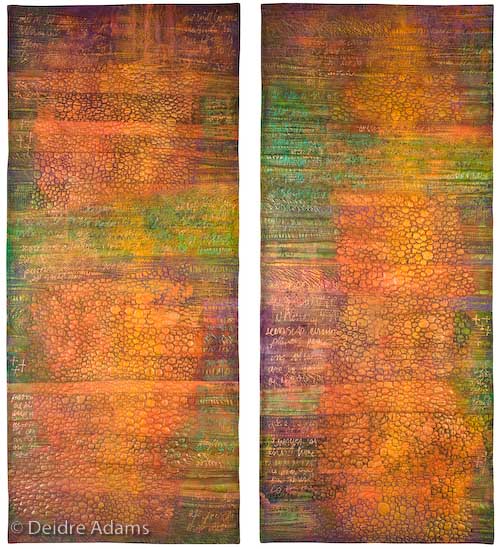Eva Hesse – Contingent
Contingent, Eva Hesse, 1969
This piece has been the focus of my attention for the last several weeks. I just finished writing a research paper on it for my Understanding Visual Culture class. Eva Hesse created this work during the last year of her life, mostly through the assistance of other people, because of her illness due to a brain tumor. She died when she was just 34 years old.
The panels in this work are made from fiberglass and latex over a kind of heavy-duty cheesecloth. Hesse was a kind of pioneer in her working methods, and she turned to working with these materials after creating a solid body of work from more “crafty” stuff like wound cord and papier maché. She worked extensively with the latex even though she knew it would become unstable over time. Unfortunately, most of these works have deteriorated beyond the point where they can be exhibited, so getting to see any of them in person is unlikely.
The assignment for this paper was to choose a work and write about it from a critical and theoretical perspective. We all had to do a proposal before starting the paper itself, and the comments I received back from the instructor for mine indicated that I was going down the wrong path. She told me I was using a standard art history approach and suggested I work from a feminist perspective instead. Well, I was reluctant to do that because I’ve never thought of myself as a feminist and don’t really know that much about it. I know that in spite of how much things have changed in the nearly 40 years since this work was made, there is still a great deal of inequity between men and women as far as status, representation, and earnings. In the late 1960s, though, “making it” as an artist was astronomically more difficult for a woman, whose accepted roles of wife, mother, sex object, etc. were just beginning to be challenged by the feminist movement.
One thing that Hesse did have on her side was her location. She was raised and went to school in New York, giving her access to people and galleries that gave her career a huge advantage. It also shaped her perspectives on what women could accomplish with the proper determination. I doubt whether she would have achieved the same success in the visual arts if she had grown up in small-town middle America at that time.
There was a lot of discussion on the SAQA Yahoo group recently about women and fiber arts, and how neither have achieved the success they deserve. I have mixed feelings about this. On the one hand, I do think yes, it would be great if textile and fiber arts could have the same status that painting and sculpture have in the fine art world. On the other hand, I can’t help thinking that whatever success I’ve had so far in my art career has been due to the fact that it is somewhat of a niche market. The playing field is definitely smaller, and it seems the ratio of shows to artists in our medium is greater than it is for art in general. I wonder if I would have any recognition at all if I were doing more traditional paintings? Probably not.
I do think we have an uphill battle as far as educating the public at large as well as those in the art world about our medium. But it’s going to take more than just making a lot of noise about what we deserve.



